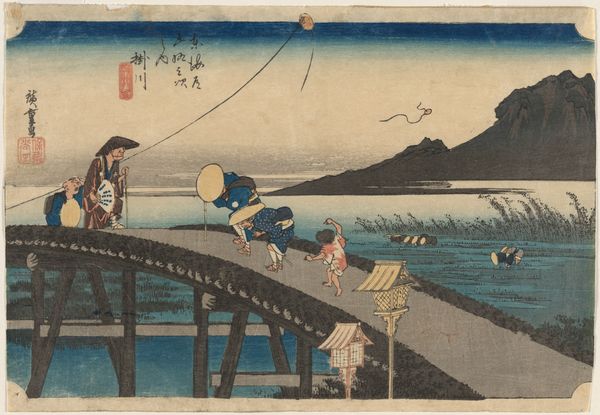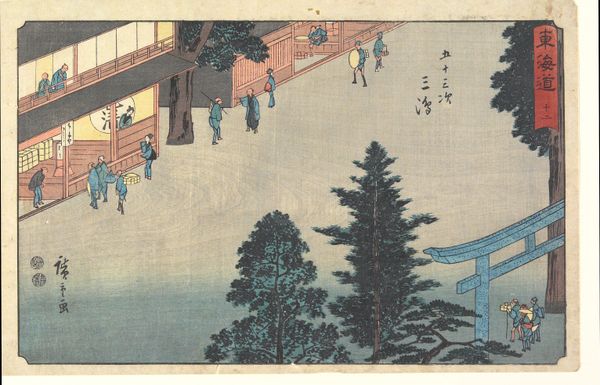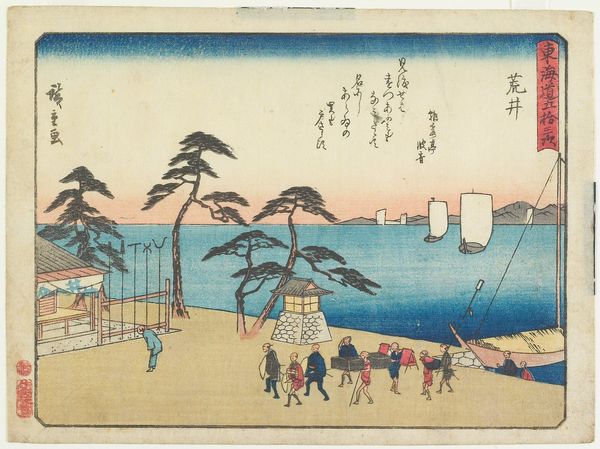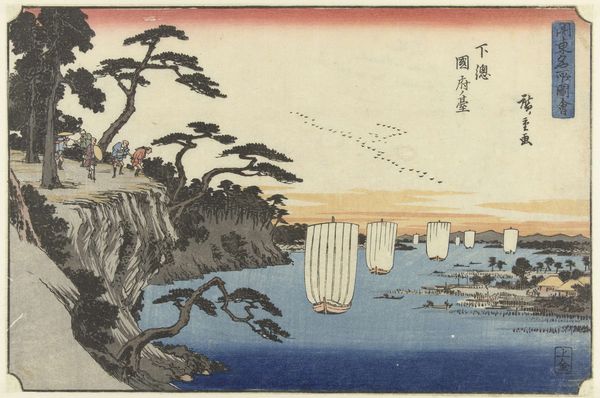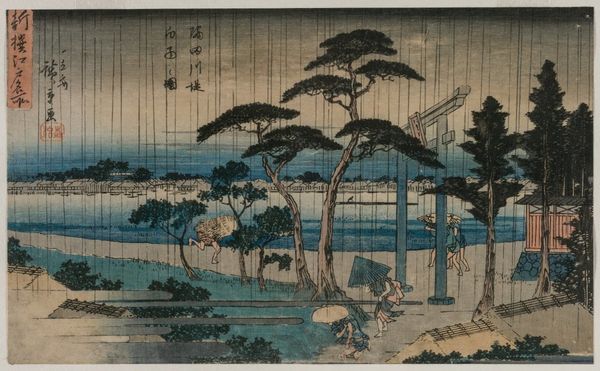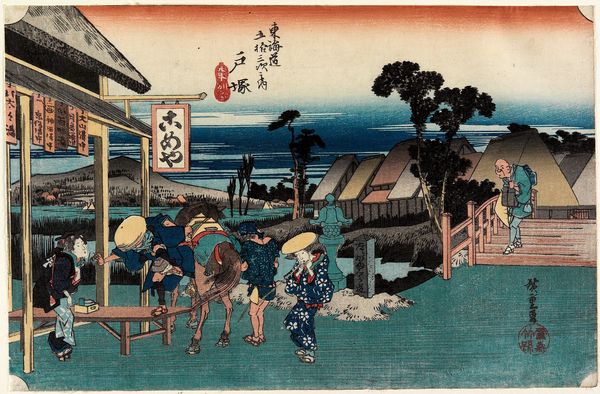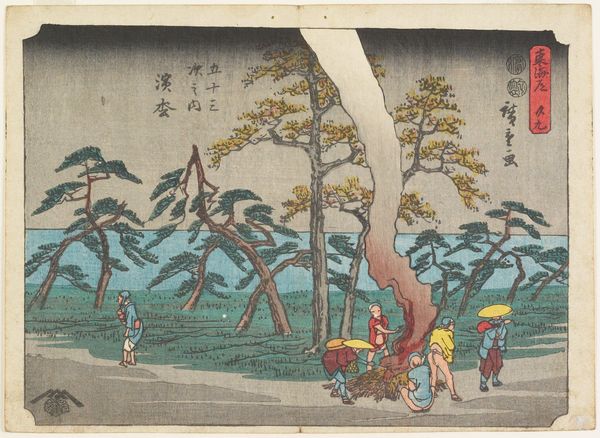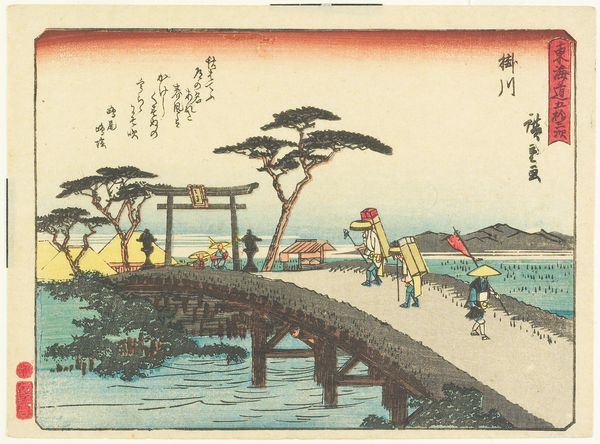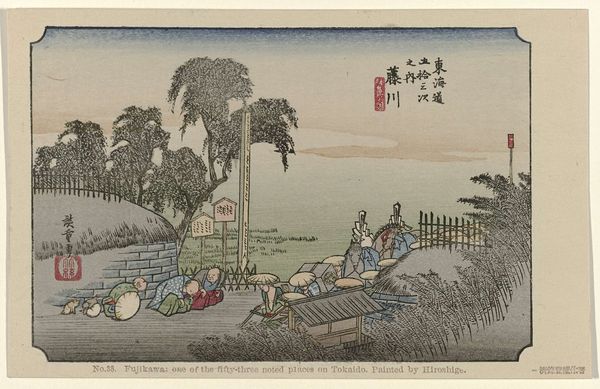
print, ink, woodblock-print
#
water colours
# print
#
asian-art
#
landscape
#
ukiyo-e
#
ink
#
woodblock-print
Copyright: Public Domain: Artvee
Utagawa Hiroshige's "Nagakubo," made with woodblock printing, exemplifies Ukiyo-e, or "pictures of the floating world." It's an aesthetic centered on leisure, travel, and the everyday. The print's atmospheric effect results from layering multiple blocks of carved wood, each inked with a different color. These pigments are not the traditional high-art materials, but rather, are tied to the social realities of the time, reflecting the widespread availability of commercial dyes. The act of printing itself involved careful hand-application and registration of colors, a laborious process. This mode of production allowed for relative reproducibility and widespread circulation. "Nagakubo" represents a specific location on the road between Edo (present-day Tokyo) and Kyoto, underscoring the social context of travel and trade. By emphasizing the built environment and human presence, Hiroshige captured a moment of life along this vital artery of labor and exchange. The print prompts us to consider the intricate dance between materials, making, and context, and to appreciate the role of craft and design in shaping our understanding of art.
Comments
No comments
Be the first to comment and join the conversation on the ultimate creative platform.
